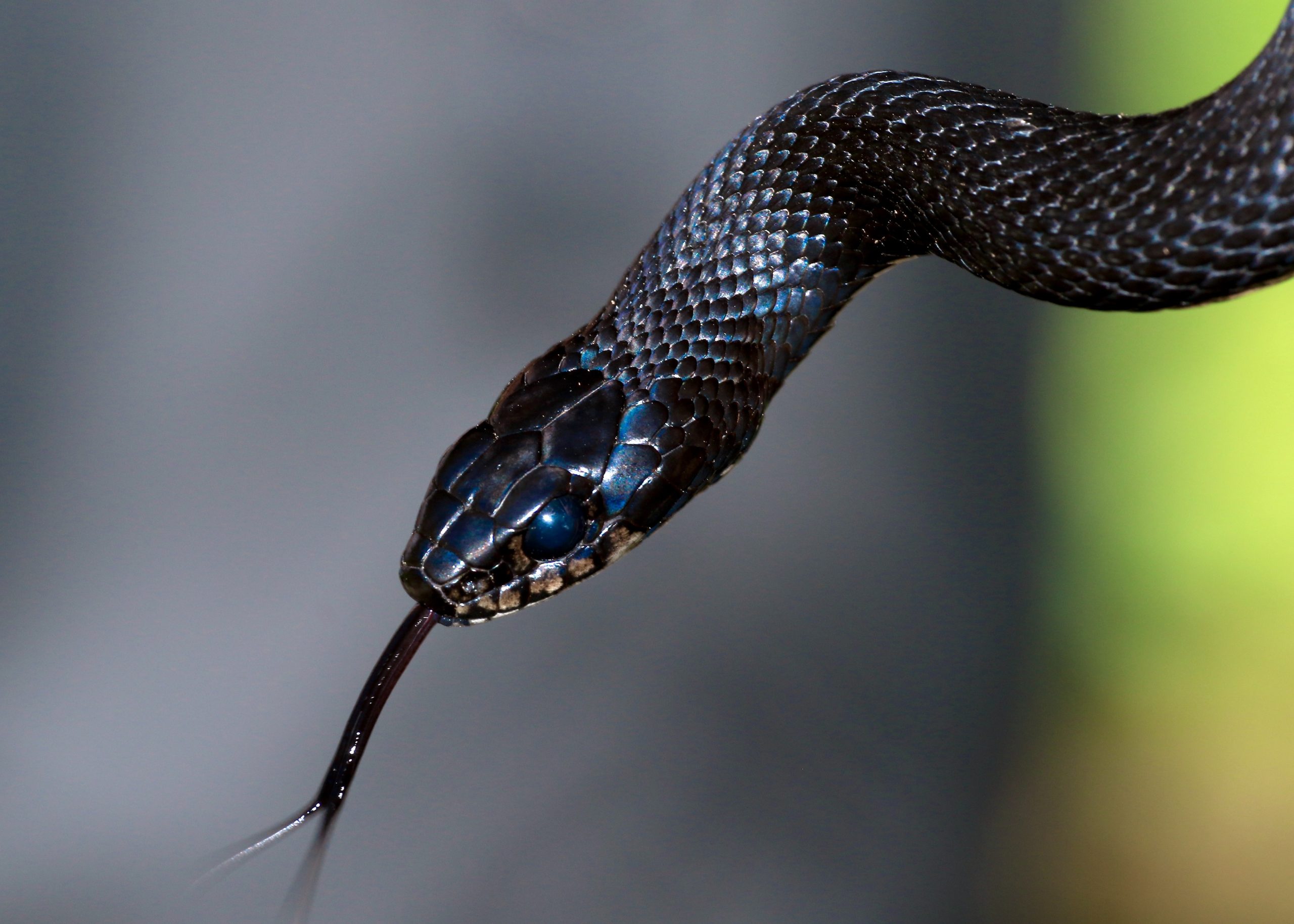
How to Distinguish Between Venomous and Non-Venomous Snakes
A select few venomous snakes reside in the United States: rattlesnakes, copperheads, cottonmouths, and coral snakes. With a few exceptions, most venomous snakes share distinguishing characteristics that aid in identification.
All species of North American venomous snakes belong to a group called pit vipers, named for the deep depressions found on either side of their heads midway between their eyes and nostrils. Non-venomous species do not have these.
Additionally, venomous snakes’ scales tend to appear in a single row on the undersides of their bodies, whereas harmless species have two rows of scales. Therefore, close scrutiny of shed skins found around private properties helps distinguish which types of snakes are present.
Furthermore, venomous snakes tend to have triangular or spade-shaped heads. However, since coral snakes do not share this feature despite being venomous, property owners should not use head shape as definitive means of identification.
Venomous and non-venomous snakes also have differently shaped pupils. Pit vipers have vertically elliptical, or egg-shaped, pupils that may appear slit-like depending on the lighting, while non-dangerous species of snakes have perfectly round pupils.
Protection & Removal
Property owners must be fairly close to snakes to view the aforementioned distinguishing features. This leaves individuals in danger of being bitten. In order to avoid the risk of snake bites, residents should simply contact the trained wildlife removal specialists at Critter Control at the first sight of snake activity.
Learn more about snake removal.
Get them out.
Keep them out.®
Experiencing a wildlife or pest issue? We can help! Complete this form and your local Critter Control® office will contact you to assist.
- Baby Snakes: Identification & Behavior
- Snake Activity in Winter
- Non-Venomous Snake Removal
- Snakes in Crawl Spaces
- Venomous Snake Removal
- Snake Diet
- Life Cycle of a Snake: Reproduction & Removal
- Types of Snakes in North America
- Snakes in Attics
- Snakes in Your Basement or Crawl Space
- Snakes in the Bathroom
- Snakes in the Kitchen – Entry & Prevention
- Snakes in a Garage or Shed
- Snakes in Your Grass or Yard
- Snakes in Your Pool
- Snakes Under Your House or Deck
- Snake Poop & Droppings
- Snake Holes: Problems & Removal
- Snakes in the House